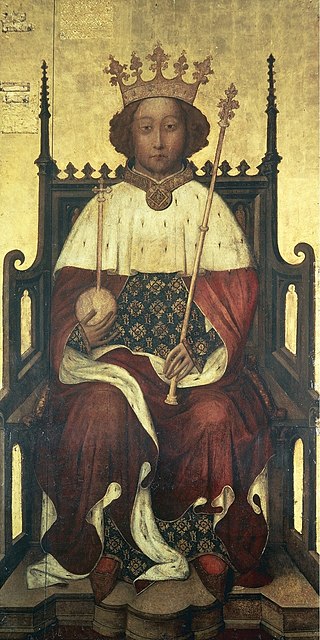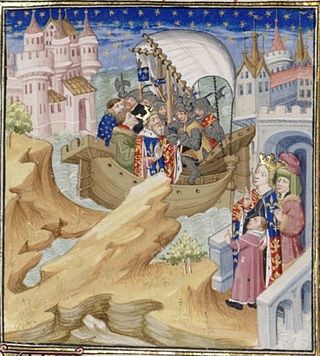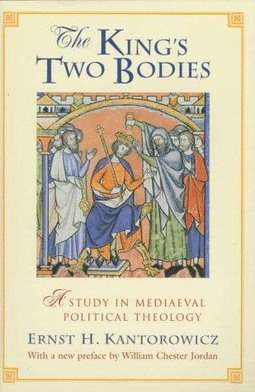Related Research Articles

The Battle of Bosworth or Bosworth Field was the last significant battle of the Wars of the Roses, the civil war between the houses of Lancaster and York that extended across England in the latter half of the 15th century. Fought on 22 August 1485, the battle was won by an alliance of Lancastrians and disaffected Yorkists. Their leader Henry Tudor, Earl of Richmond, became the first English monarch of the Tudor dynasty by his victory and subsequent marriage to a Yorkist princess. His opponent Richard III, the last king of the House of York, was killed during the battle, the last English monarch to die in combat. Historians consider Bosworth Field to mark the end of the Plantagenet dynasty, making it one of the defining moments of English history.

Henry VII was King of England from his seizure of the crown on 22 August 1485 until his death in 1509. He was the first of the House of Tudor to become king.

Edward I, also known as Edward Longshanks and the Hammer of the Scots, was King of England from 1272 to 1307. Concurrently, he was Lord of Ireland, and from 1254 to 1306, he ruled Gascony as Duke of Aquitaine in his capacity as a vassal of the French king. Before his accession to the throne, he was commonly referred to as the Lord Edward. The eldest son of Henry III, Edward was involved from an early age in the political intrigues of his father's reign. In 1259, he briefly sided with a baronial reform movement, supporting the Provisions of Oxford. After reconciliation with his father, he remained loyal throughout the subsequent armed conflict, known as the Second Barons' War. After the Battle of Lewes, Edward was held hostage by the rebellious barons, but escaped after a few months and defeated the baronial leader Simon de Montfort at the Battle of Evesham in 1265. Within two years the rebellion was extinguished and, with England pacified, Edward left to join the Ninth Crusade to the Holy Land in 1270. He was on his way home in 1272 when he was informed of his father's death. Making a slow return, he reached England in 1274 and was crowned at Westminster Abbey.

The House of Lancaster was a cadet branch of the royal House of Plantagenet. The first house was created when King Henry III of England created the Earldom of Lancaster—from which the house was named—for his second son Edmund Crouchback in 1267. Edmund had already been created Earl of Leicester in 1265 and was granted the lands and privileges of Simon de Montfort, 6th Earl of Leicester, after de Montfort's death and attainder at the end of the Second Barons' War. When Edmund's son Thomas, 2nd Earl of Lancaster, inherited his father-in-law's estates and title of Earl of Lincoln he became at a stroke the most powerful nobleman in England, with lands throughout the kingdom and the ability to raise vast private armies to wield power at national and local levels. This brought him—and Henry, his younger brother—into conflict with their cousin King Edward II, leading to Thomas's execution. Henry inherited Thomas's titles and he and his son, who was also called Henry, gave loyal service to Edward's son King Edward III.

Piers Gaveston, 1st Earl of Cornwall was an English nobleman of Gascon origin, and the favourite of Edward II of England.

Robert Kilwardby was an Archbishop of Canterbury in England and a cardinal. Kilwardby was the first member of a mendicant order to attain a high ecclesiastical office in the English Church.
Robert Burnell was an English bishop who served as Lord Chancellor of England from 1274 to 1292. A native of Shropshire, he served as a minor royal official before entering into the service of Prince Edward, the future King Edward I of England. When Edward went on the Eighth Crusade in 1270, Burnell stayed in England to secure the prince's interests. He served as regent after the death of King Henry III of England while Edward was still on crusade. He was twice elected Archbishop of Canterbury, but his personal life—which included a long-term mistress who was rumoured to have borne him four sons—prevented his confirmation by the papacy. In 1275 Burnell was elected Bishop of Bath and Wells, after Edward had appointed him Lord Chancellor in 1274.
Walter Reynolds was Bishop of Worcester and then Archbishop of Canterbury (1313–1327) as well as Lord High Treasurer and Lord Chancellor.

Frederic William Maitland was an English historian and lawyer who is regarded as the modern father of English legal history. From 1884 until his death in 1906, he was reader in English law, then Downing Professor of the Laws of England at the University of Cambridge.

Edmund Fitzalan, 2nd Earl of Arundel was an English nobleman prominent in the conflict between King Edward II and his barons. His father, Richard Fitzalan, 1st Earl of Arundel, died in 1302, while Edmund was still a minor. He, therefore, became a ward of John de Warenne, Earl of Surrey, and married Warenne's granddaughter, Alice. In 1306 he was styled Earl of Arundel, and served under Edward I in the Scottish Wars, for which he was richly rewarded.
The Charter of Liberties, also called the Coronation Charter, or Statutes of the Realm, was a written proclamation by Henry I of England, issued upon his accession to the throne in 1100. It sought to bind the King to certain laws regarding the treatment of nobles, church officials, and individuals. The nineteenth-century historians Frederick Maitland and Frederick Pollock considered it a landmark document in English legal history and a forerunner of Magna Carta.
Walter Giffard was Lord Chancellor of England and Archbishop of York.

Henry of Bracton, also Henry de Bracton, also Henricus Bracton, or Henry Bratton also Henry Bretton was an English cleric and jurist.

The Wonderful Parliament was a session of the English parliament held from October to November 1386 in Westminster Abbey. Originally called to address King Richard II's need for money, it quickly refocused on pressing for the reform of his administration. The King had become increasingly unpopular because of excessive patronage towards his political favourites combined with the unsuccessful prosecution of war in France. Further, there was a popular fear that England was soon to be invaded, as a French fleet had been gathering in Flanders for much of the year. Discontent with Richard peaked when he requested a then-unprecedented sum to raise an army with which to invade France. Instead of granting the King's request, the houses of the Lords and the Commons effectively united against him and his unpopular chancellor, Michael de la Pole, 1st Earl of Suffolk. Seeing de la Pole as both a favourite who had unfairly benefited from the King's largesse, and the minister responsible for the King's failures, parliament demanded the earl's impeachment.
Gilbert de Clare, 8th Earl of Gloucester, 7th Earl of Hertford was an English nobleman and military commander in the Scottish Wars. In contrast to most English earls at the time, his main focus lay in the pursuit of war rather than in domestic political strife. He was the son of Gilbert de Clare, 7th Earl of Gloucester, and Joan of Acre, daughter of King Edward I. The older Gilbert died when his son was only four years old, and the younger Gilbert was invested with his earldoms at the young age of sixteen. Almost immediately, he became involved in the defence of the northern border, but later he was drawn into the struggles between Edward II and some of his barons. He was one of the Lords Ordainers who ordered the expulsion of the king's favourite Piers Gaveston in 1311. When Gaveston was killed on his return in 1312, Gloucester helped negotiate a settlement between the perpetrators and the king.

The Boulogne agreement was a document signed by a group of English magnates in 1308, concerning the government of Edward II. After the death of Edward I in 1307, discontent soon developed against the new king. This was partly due to lingering problems from the previous reign, but also related to issues with Edward II himself. Particularly his abandonment of the Scottish Wars and his patronage of the unpopular Piers Gaveston caused discontent. Drawn up in Boulogne-sur-Mer during the king's nuptials, the document vaguely asserted the signatories' duty to guard the rights of the Crown. Three months later, the agreement was the basis for another document, justifying opposition to the king. This latter document, the so-called Declaration of 1308, is notable for its use of the "doctrine of capacities": the distinction between the person of the King and the institution of the Crown.
Buckingham's rebellion was a failed but significant uprising, or collection of uprisings, of October 1483 in England and parts of Wales against Richard III of England.

The body politic is a polity—such as a city, realm, or state—considered metaphorically as a physical body. Historically, the sovereign is typically portrayed as the body's head, and the analogy may also be extended to other anatomical parts, as in political readings of Aesop's fable of "The Belly and the Members". The image originates in ancient Greek philosophy, beginning in the 6th century BC, and was later extended in Roman philosophy. Following the high and late medieval revival of the Byzantine Corpus Juris Civilis in Latin Europe, the "body politic" took on a jurisprudential significance by being identified with the legal theory of the corporation, gaining salience in political thought from the 13th century on. In English law the image of the body politic developed into the theory of the king's two bodies and the Crown as corporation sole.

The Parliament of 1327, which sat at the Palace of Westminster between 7 January and 9 March 1327, was instrumental in the transfer of the English Crown from King Edward II to his son, Edward III. Edward II had become increasingly unpopular with the English nobility due to the excessive influence of unpopular court favourites, the patronage he accorded them, and his perceived ill-treatment of the nobility. By 1325, even his wife, Queen Isabella, despised him. Towards the end of the year, she took the young Edward to her native France, where she entered into an alliance with the powerful and wealthy nobleman Roger Mortimer, who her husband previously had exiled. The following year, they invaded England to depose Edward II. Almost immediately, the King's resistance was beset by betrayal, and he eventually abandoned London and fled west, probably to raise an army in Wales or Ireland. He was soon captured and imprisoned.

The King's Two Bodies is a 1957 historical book by Ernst Kantorowicz. It concerns medieval political theology and the distinctions separating the "body natural" and the "body politic".
References
- ↑ Valente 2003 , p. 30
- ↑ Maitland & Pollock 1996 , pp. 523–4
- 1 2 Davies 1967 , p. 22
- ↑ Davies 1967 , p. 23
- ↑ Chrimes 1936 , p. 34
- ↑ Maddicot 1970 , pp. 73–4
- ↑ Maitland & Pollock 1996 , p. 35